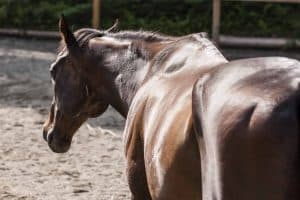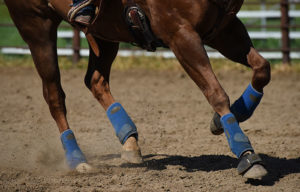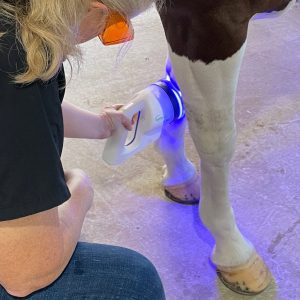Equine Airway Health Starts in the Barn
- Topics: Air Quality, Article, Farm and Barn, Horse Care, Welfare and Industry

Ventilation inside a barn begins with good airflow. Open windows, doors, and access to outside runs ensure air circulates. Fans enhance circulation, too, driving stale air and irritants away from stabled horses.
Katie Seabaugh, DVM, MS, Dipl. ACVS, ACVSMR, assistant professor on the Equine Sports Medicine Team at Colorado State University, in Fort Collins, says affordable air quality monitors encourage owners to evaluate what their stabled horses are breathing. “Put an air quality monitor in the barn, and then make a management change and look at how air quality in a barn changes when certain things are done,” she says.
Tufts University Cummings School of Veterinary Medicine researchers found that by using a laser monitor they could measure how many particulates are present in air quality samples. Another method collects dust particles by drawing air through a “cyclone” and determining whether endotoxins are present.
Amanda C. Trimble BVMS, MS, PGDipVetEd, Dipl. ACVIM-LAIM, clinical assistant professor of Equine Internal Medicine at Texas A&M’s College of Veterinary Medicine, also stresses the importance of the owner’s role in mitigating toxins and irritants inside the barn.

“There are bedding types lower in dust content, such as paper,” she says. “Try to move (horses) outside before you begin cleaning. Avoid straw. Never clean the barn (especially with a leaf blower) when the horses are inside. Don’t let the ammonia build up from urine, as ammonia is a major irritant. Stalls should be cleaned daily.”
Dipping hay flakes or a full haynet into clean water and removing it immediately coats the hay with enough moisture to remove particulates without affecting carbohydrate, vitamin, or mineral content.
“Many owners wet down hay to decrease dust right before feeding to a horse with asthma,” says Trimble. “You can also steam hay or switch to pelleted feeds. Make sure horses have access to fresh, clean water at all times.” Again, keeping the airways moist can help facilitate the clearance of inhaled particulate matter.
For a landmark European study published in the Journal of Veterinary Medicine in 2018, researchers collected data about bedding and forage (dry, moistened, or steamed hay, or haylage) and studied its effects on lower airway inflammation. They assessed 731 active, sport, race, and leisure horses for respiratory disease and found the degree of inflammation was higher for horses housed indoors with straw bedding versus shavings. The researchers also found that steamed hay significantly reduced cases of equine asthma.
“It’s so important to do things like managing what we can in our facilities,” says Duncan. “Responsible management goes a long way, and we can do it ourselves as horse people.”
Written by:
Anna Sochocky
Related Articles
Stay on top of the most recent Horse Health news with












